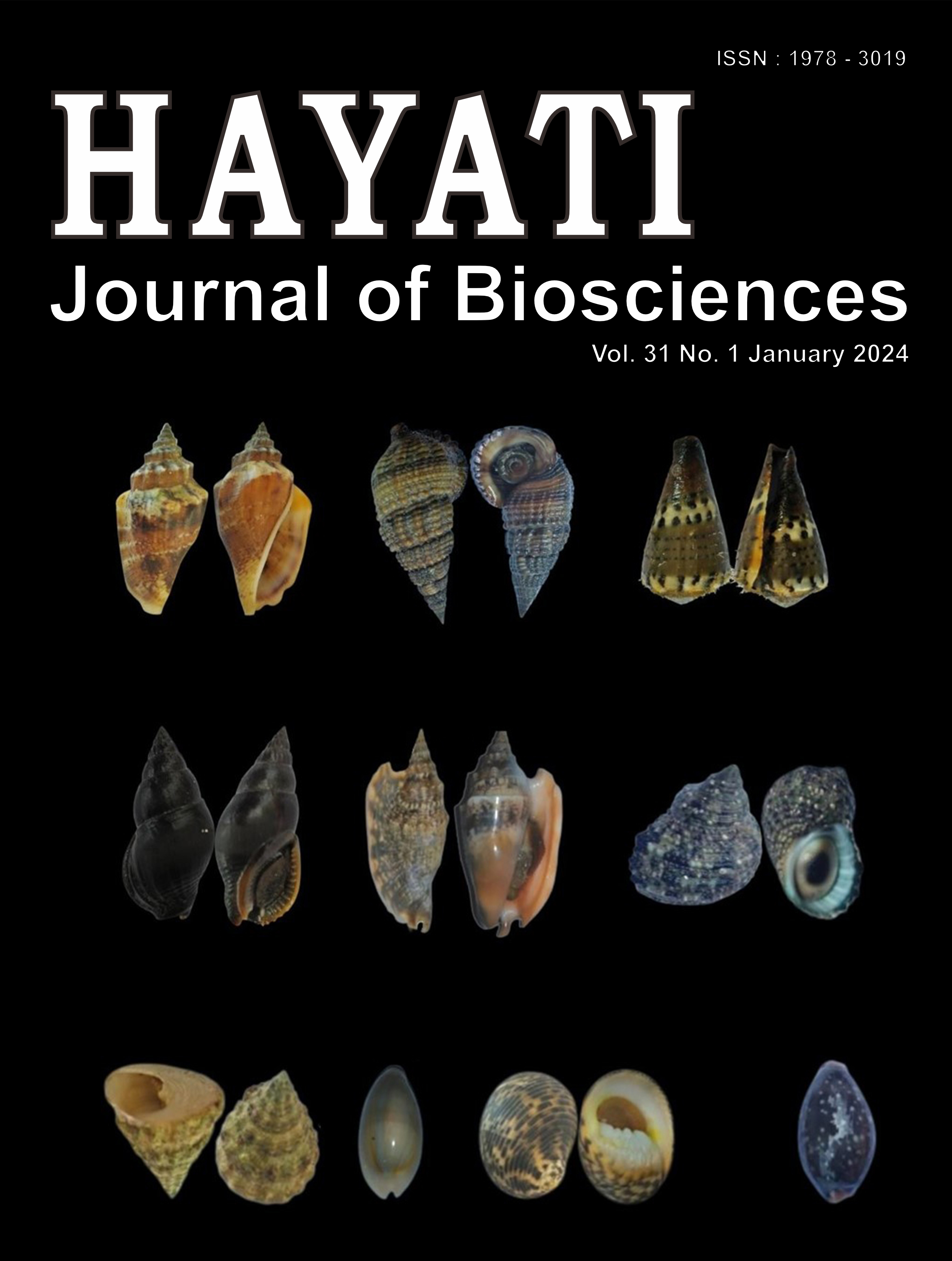The First Evidence of Potential Antibacterial Activity of Laccase Enzyme from Indonesian White Rot Fungi against Pathogenic Bacteria
Abstract
The antibacterial agent can be extracted from plants, animals, and microorganisms such as fungi. The potential antibacterial activity of laccase derived from fungi remains limited in current reports. This study aimed to investigate the characteristics of laccase from Indonesian white rot fungi (WRF) and explore its potential as an antibacterial agent. The laccases were produced by Trametes hirsuta D7, Trametes hirsuta EDN 082, Leiotrametes menziesii BRB 73, and Lentinus sajor-caju BRB 12 using oil palm empty fruit bunch as a substrate. The results showed that the Indonesian WRF tested produced brownish-yellow laccase. FTIR analysis demonstrated similar peak patterns but distinct absorption intensities among the laccases. Trametes hirsuta D7 gained 0.044 U/ml of the greatest laccase activity. Laccase, with minimal activity of 0.001 U/ml–0.026 U/ml, suppressed the propagation of Propionibacterium acnes and Staphylococcus aureus. Escherichia coli and Pseudomonas aeruginosa could be inhibited by the laccase with a minimum activity of 0.002 U/ml–0.044 U/ml. However, S. aureus and E. coli showed the Minimum Bactericidal Concentration in the laccase activity range of 0.018 U/ml–0.308 U/ml. Gram-positive and Gram-negative bacteria grow more slowly when the laccase is present, supposed the laccase as a potential antibacterial agent.
Downloads
Copyright (c) 2023 Sita Heris Anita, Deni Zulfiana, Ananda Digita, Nafisah Nuha, Vilya Syafriana, Amelia Febriani, Dede Heri Yuli Yanto

This work is licensed under a Creative Commons Attribution-NonCommercial 4.0 International License.
HAYATI J Biosci is an open access journal and the article's license is CC-BY-NC. This license lets others distribute, remix, tweak, and build upon author's work, as long as they credit the original creation. Authors retain copyright and grant the journal/publisher non exclusive publishing rights with the work simultaneously licensed under a https://creativecommons.org/

























.png) IPB University
IPB University Department of Biology
Department of Biology The Indonesian Biological Society
The Indonesian Biological Society 

